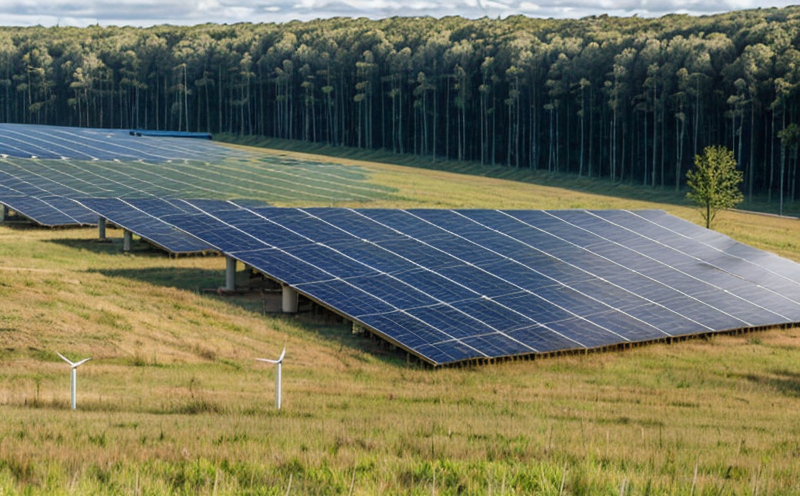IEC 62716 Ammonia Resistance Environmental Test for PV Modules
The IEC 62716 ammonia resistance environmental test is a critical procedure designed to evaluate the durability and performance of photovoltaic (PV) modules under exposure to high concentrations of ammonia. This test simulates real-world conditions where PV systems may be exposed to ammonia, such as in industrial environments or near fertilizer production facilities.
The test involves subjecting PV modules to a controlled environment with elevated levels of ammonia gas for extended periods. The purpose is to assess the module's ability to withstand degradation without compromising its electrical performance and structural integrity. This ensures that renewable energy systems are reliable, safe, and long-lasting in challenging environments.
The IEC 62716 standard provides a standardized approach to this testing, ensuring consistency and comparability across different manufacturers and installations. Compliance with this test is essential for meeting international standards and regulations related to the deployment of PV systems in ammonia-rich areas.
During the test, the module undergoes rigorous conditions that mimic actual exposure scenarios. This includes precise control over temperature, humidity, and the concentration of ammonia gas. The testing process involves multiple stages, each designed to simulate different environmental stressors encountered in industrial settings.
The primary outcome of this test is a detailed report that evaluates several key parameters:
- Electrical performance: Measuring changes in open-circuit voltage (Voc), short-circuit current (Isc), and fill factor (FF).
- Mechanical integrity: Checking for any physical damage or degradation to the module's structural components.
- Material stability: Assessing whether the materials used in the PV module are resistant to corrosion by ammonia.
The test results provide valuable insights into the long-term performance and reliability of PV modules. This information is crucial for quality managers, compliance officers, R&D engineers, and procurement teams who need to ensure that their products meet stringent environmental standards.
Customer Impact and Satisfaction
The IEC 62716 ammonia resistance test has a direct positive impact on customer satisfaction by ensuring that PV modules are reliable, safe, and compliant with international standards. This translates into:
- Increased confidence in the performance of renewable energy systems.
- Reduced maintenance costs due to extended module lifespan.
- Enhanced reputation for quality among customers and stakeholders.
By choosing this test, customers can ensure that their investments in PV technology are protected against environmental challenges. This not only enhances customer satisfaction but also supports sustainable business practices.
Use Cases and Application Examples
The IEC 62716 ammonia resistance test is particularly relevant for:
- Industrial PV installations near fertilizer plants or other ammonia-emitting facilities.
- PV systems in regions with high concentrations of atmospheric ammonia due to agricultural activities.
- R&D projects focused on developing resilient PV technologies for extreme environments.
In these applications, the test helps ensure that PV modules can operate efficiently and safely under conditions that would otherwise compromise their performance. This is especially important in areas where ammonia exposure could lead to significant degradation of traditional materials used in solar panels.
Why Choose This Test
- Enhanced reliability: Ensures that PV modules can withstand harsh environmental conditions without degradation.
- Improved compliance: Meets international standards and regulations related to renewable energy systems in industrial settings.
- Increased safety: Protects against potential hazards associated with ammonia exposure, enhancing the overall safety of installations.
- Ensuring the longevity of PV systems, reducing waste and environmental impact.
- Promoting the use of renewable energy sources in challenging environments, thereby minimizing reliance on fossil fuels.
- Supporting the deployment of technologies that are resilient to environmental stressors, which is crucial for global sustainability goals.





